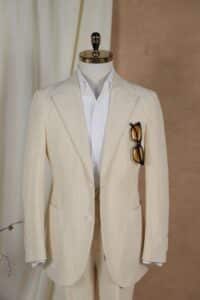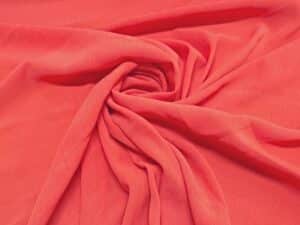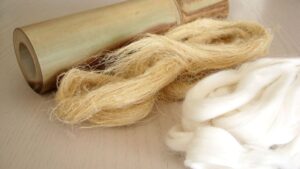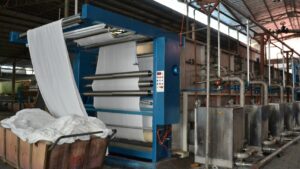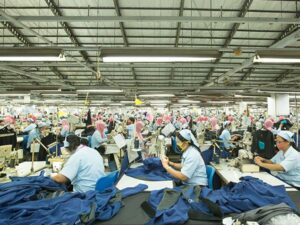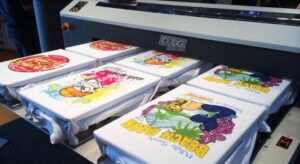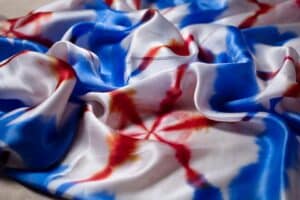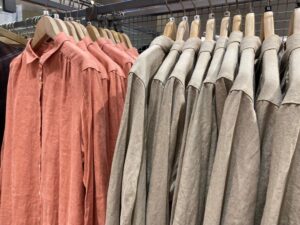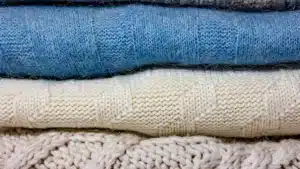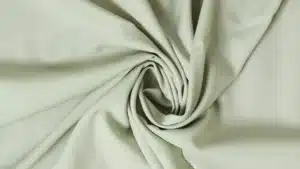Taffeta fabric is smooth and feels fancy to touch. It is a bit stiff and shiny, making it great for fancy clothes and home decorations. You can tell it apart by its rustling sound, which many people like. In the past, kings and queens loved this fabric because it looked so nice. It is made from silk or man-made fibers, so it keeps its shape and is light but strong. Its many uses and classic style make it important in the fabric world.
Key Takeaways
Taffeta fabric is famous for being smooth, shiny, and crisp.
It works well for fancy clothes and decorating homes.
It is made from silk or man-made fibers.
Silk taffeta looks fancy, while synthetic taffeta costs less.
Taffeta is loved for wedding dresses and evening gowns.
It holds its shape and makes beautiful designs.
People also use it for curtains and furniture to look stylish.
Taffeta is great, but think about its effect on nature.
Look for eco-friendly options to help the environment.
What is Taffeta Fabric?
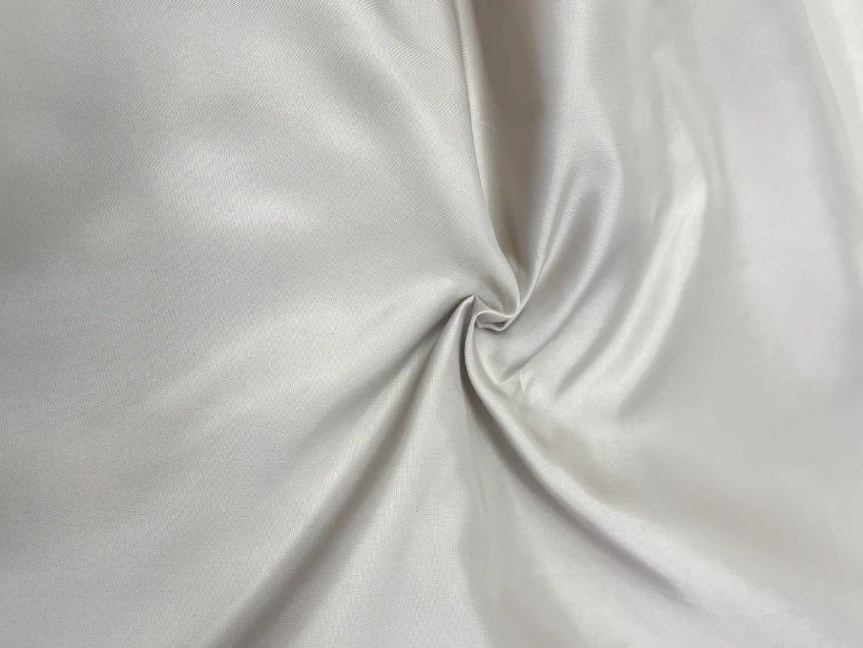
Definition and Origin
Taffeta is a fancy fabric with a long history. Its name comes from a Persian word meaning "woven" or "twisted." It started in Persia, now called Iran. Early taffeta was made from silk and loved by kings and rich people. By the 1100s, it became popular in Europe for fancy clothes and accessories. Later, new ways of making fabric added man-made fibers to taffeta. This made it cheaper and easier for more people to use. Today, taffeta is used in wedding dresses, evening gowns, and fancy home decorations.
In Chinese, we call Taffeta as 塔夫绸(tǎ fū chóu).
Key Characteristics That Make It Unique
Taffeta is special because of its unique features. It has a shiny, smooth surface that makes clothes and decorations look fancy. The fabric is crisp and holds its shape well, so it’s great for formal dresses and curtains. Even though it’s light, taffeta is strong and doesn’t wrinkle easily. It comes in many colors and styles, giving designers lots of choices. Whether you wear it or use it to decorate, taffeta is comfy, breathable, and always stylish.
How is Taffeta Fabric Made?
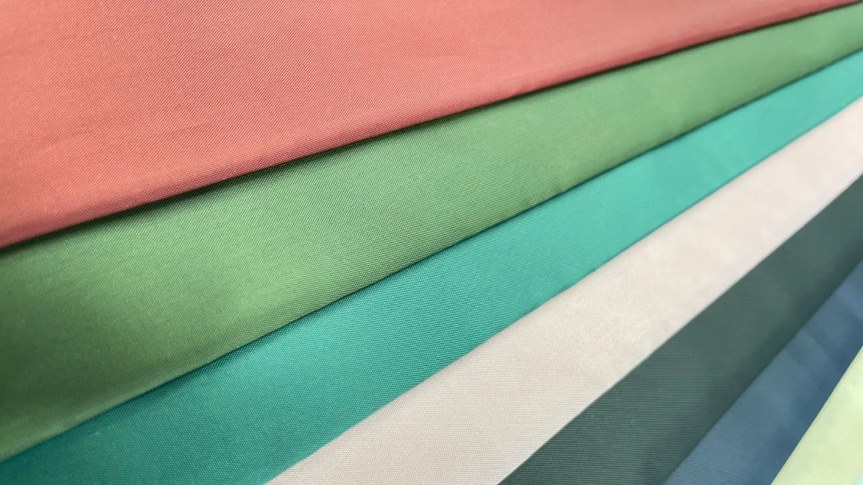
Materials Used in Taffeta Production
Taffeta can be made from different materials. Common ones are silk, polyester, nylon, and acetate. Silk taffeta feels soft and fancy. Polyester and nylon taffeta are cheaper and last longer. Silk comes from silkworm cocoons, which are boiled and unwound into threads. Synthetic taffeta is made from chemicals like petroleum. These materials are turned into threads to make the fabric. Each material gives taffeta special traits, like shine, strength, or breathability.
The Weaving Process
The weaving process makes taffeta crisp and smooth. First, fibers are spun into threads. Silk threads are handled gently to keep them smooth. Synthetic fibers are melted and spun into strands. The threads are woven tightly in a simple over-and-under pattern. This creates the fabric's stiffness and shiny surface. After weaving, the fabric is dyed in bright colors. Silk takes dye well, making rich and even colors. Lastly, heat or chemicals are used to make the fabric glossy.
Differences Between Handwoven and Machine-Made Taffeta
Handwoven taffeta is made carefully on traditional looms. It is softer and more detailed but takes longer to make. Machine-made taffeta is made faster on industrial looms. It costs less but may not be as soft or detailed. Both types are checked for quality. This includes checking materials, watching the weaving, and testing the fabric for flaws.
Common Uses of Taffeta Fabric
The Durable, Water-Resistant Choice for Outdoor Gear
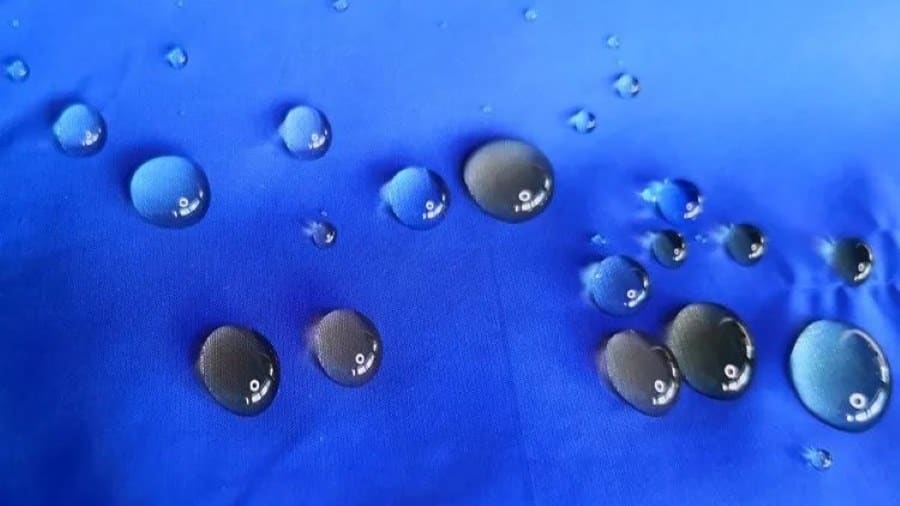
Renowned for its exceptional strength and reliable waterproof properties, taffeta fabric is a top-performing material widely used in high-demand outdoor applications. Its tightly woven polyester construction delivers outstanding tear resistance and weather protection, making it an ideal choice for tents, rain jackets, backpacks, and other gear that requires both durability and weatherproof performance. Lightweight yet rugged, taffeta combines functionality with versatility, ensuring long-lasting performance even in harsh conditions.
Applications in Fashion
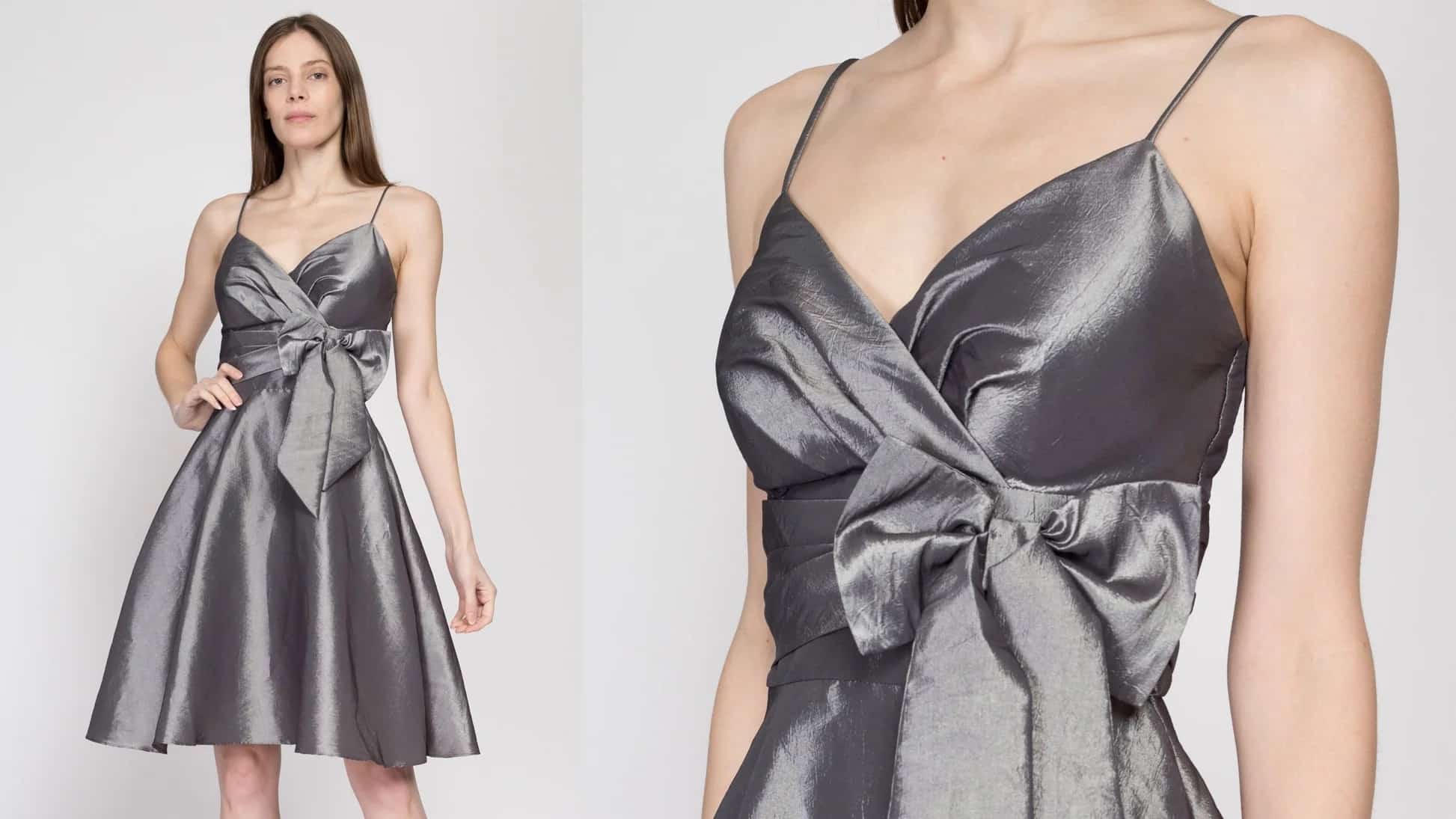
Taffeta is important in the fashion world. It is often used for prom dresses, wedding gowns, and evening outfits. Its shiny look and stiff feel make it great for fancy designs. Wedding dresses look elegant because taffeta holds its shape well. More wedding events mean more demand for evening gowns. This shows how useful taffeta is for formal clothes. Designers also use it as lining to add comfort and structure. Its flexibility keeps it popular for high-end clothing.
Uses in Home Décor
Taffeta makes homes look stylish and classy. It is used for curtains, drapes, and furniture covers. Its shiny surface and texture improve the room's look. Taffeta keeps pleats and folds nicely, perfect for window designs. It is also used for pillows and tablecloths, adding a fancy touch. Taffeta lasts a long time, so these items stay beautiful. This makes it a smart choice for both style and durability.
Other Industries That Utilize Taffeta
Taffeta is used in many other industries too. Costume makers use it for plays because it is colorful and holds its shape. It is also found in ribbons, bows, and ties because of its shiny finish. Some outdoor gear, like rain jackets and windbreakers, use taffeta. New ideas even use it in cars and airplanes, showing how adaptable it is. Taffeta’s many uses prove its value in different fields.
Types of Taffeta Fabric
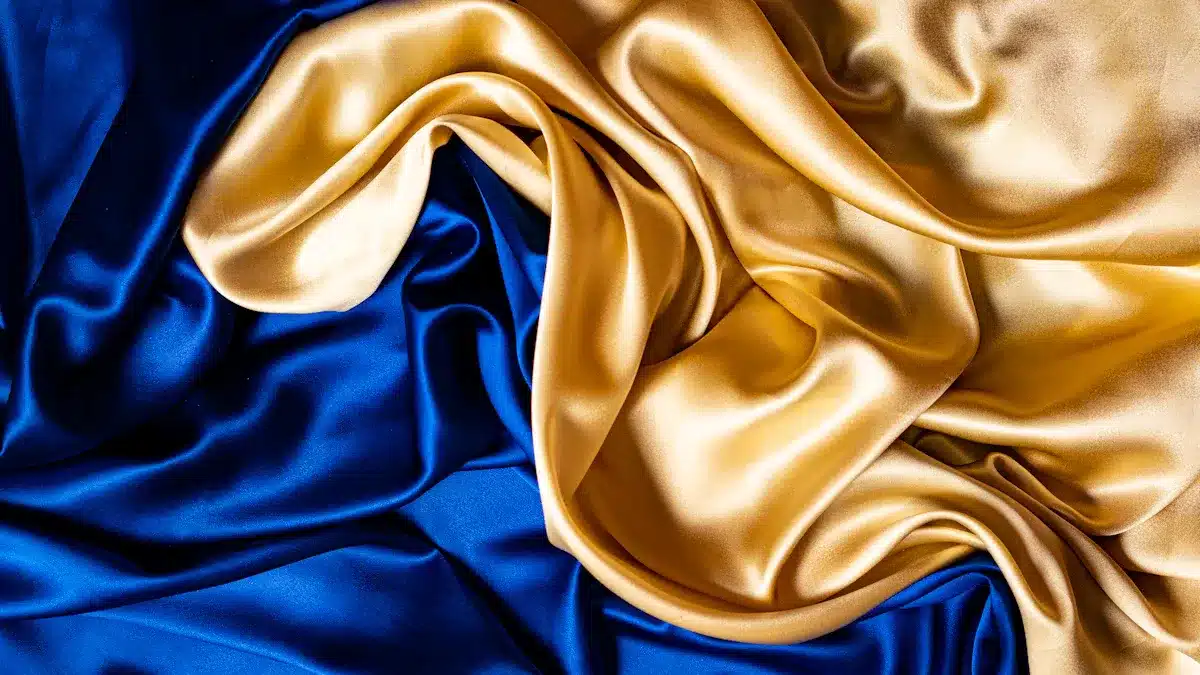
Silk Taffeta vs. Synthetic Taffeta
Silk and synthetic taffeta have clear differences. Silk taffeta is made from natural silk, making it soft and fancy. It costs more and is used for wedding dresses and fancy gowns. Synthetic taffeta, made from polyester or nylon, is cheaper and stronger. It’s great for everyday clothes or budget-friendly choices.
Feature | Silk Taffeta | Synthetic Taffeta |
|---|---|---|
Composition | Made from natural silk | Made from polyester or nylon |
Price | Costs more | Cheaper |
Value for Money | Best for special events | Great for saving money |
Environmental Impact | Natural and biodegradable | Synthetic, not eco-friendly |
Common Usage | Fancy fashion, weddings | Everyday clothes, budget options |
Silk taffeta feels elegant, while synthetic taffeta is practical. Pick based on your budget and needs.
Plain Taffeta vs. Shot Taffeta
Plain and shot taffeta look different because of how they’re made. Plain taffeta has one solid color, making it great for linings and formal outfits. Shot taffeta uses two thread colors, creating a shiny, color-changing effect. This makes it perfect for evening dresses and special outfits.
Feature | Plain Taffeta | Shot Taffeta |
|---|---|---|
Weave | One solid color | Two thread colors for warp and weft |
Appearance | Simple and solid | Shiny, changes color at angles |
Material | Often silk or polyester | Usually silk, sometimes polyester |
Common Uses | Linings, formal wear | Evening gowns, special outfits |
Plain taffeta is simple and useful, while shot taffeta adds sparkle and style.
Other Variants (e.g., Moiré Taffeta, Paper Taffeta)
There are other types of taffeta like moiré and paper taffeta. Moiré taffeta has a wavy, water-like pattern, adding texture to clothes and décor. Paper taffeta is very thin and crisp, perfect for light designs.
Moiré Taffeta: Has a wavy pattern, used in fancy clothes and furniture.
Paper Taffeta: Thin and stiff, great for light outfits or decorations.
These types show how taffeta can be used in many creative ways.
Cost of Taffeta Fabric

Factors Influencing Price
The cost of taffeta fabric depends on many things. The material is a big factor. Silk taffeta costs more because making silk takes time and effort. Synthetic taffeta, made from polyester or nylon, is cheaper. This is because man-made fibers are easier to produce.
How the fabric is made also changes the price. Handwoven taffeta takes more time and skill, so it costs more. Machine-made taffeta is faster to make and less expensive. Where the fabric is made also matters. Places with high labor or land costs make pricier fabric. Rules about the environment in some areas can also raise costs.
Other costs, like machines, materials, and energy, also affect the price. For example, making silk involves boiling silkworm cocoons, which needs special tools and care. Synthetic fibers are made with chemicals, which need less work but still cost money to produce.
Here’s a simple table of what affects taffeta prices:
Aspect | Details |
|---|---|
Material | Silk (natural, costly) vs. Synthetic (man-made, cheaper) |
Production Method | Handwoven (slow, expensive) vs. Machine-made (quick, affordable) |
Location | Labor and land costs, environmental rules |
Operational Costs | Machines, raw materials, energy use |
Comparison of Silk and Synthetic Taffeta Costs
Silk taffeta is fancy and high-quality. It feels soft and is great for special events. But it is expensive.
Synthetic taffeta is a cheaper option. It is made from polyester or nylon and costs less. It is not as soft as silk but is strong and easy to care for.
When picking between silk and synthetic taffeta, think about your budget. Silk is best for fancy events. Synthetic is better for everyday use or saving money.
Environmental Impact of Taffeta Fabric
Sustainability of Silk Taffeta
Silk taffeta is a better eco-friendly choice than synthetic ones. It is made from natural silk, which breaks down easily in nature. The silk comes from silkworms that feed on mulberry trees. These trees clean the air by taking in carbon dioxide. Also, making silk uses fewer harmful chemicals than synthetic fabrics.
But silk taffeta has some downsides. Growing mulberry trees and raising silkworms need a lot of land and water. Some silk farms also use energy-heavy methods, adding to pollution. Even with these issues, silk taffeta is still a greener fabric choice.
Environmental Concerns with Synthetic Taffeta
Synthetic taffeta, made from polyester or nylon, harms the environment. These materials come from petroleum, which cannot be replaced. Making them releases gases that worsen climate change. Synthetic taffeta does not break down and stays in landfills for years.
Another problem is microplastics. Washing synthetic taffeta sends tiny plastic pieces into water. These harm sea animals and can end up in our food. While synthetic taffeta is cheap and strong, it has a big environmental cost.
Efforts Toward Eco-Friendly Alternatives
The textile industry is working on greener taffeta options. Some companies make recycled polyester taffeta to cut waste. Others are trying plant-based materials like bio-nylon, which uses renewable resources.
You can also find silk taffeta made with organic farming. This avoids harmful chemicals and helps nature thrive. Supporting brands that care about the planet can lower taffeta’s impact. Choosing eco-friendly fabrics helps create a cleaner world.
Why Taffeta Fabric is Important in the Textile World
Essential for Outdoor Clothing
Taffeta fabric is a top choice for outdoor apparel thanks to its perfect balance of strength, waterproofness, and lightweight comfort. Its tightly woven polyester construction blocks wind and rain while remaining breathable—ideal for jackets, ski wear, and hiking gear. Durable yet flexible, taffeta keeps you protected without restricting movement, making it a reliable partner for both extreme adventures and everyday wear.
Its Role in Fancy Fashion
Taffeta is key in fancy fashion designs. Designers love it for its shiny look and firm texture. It’s often used in wedding dresses, evening gowns, and high-end collections. The fabric’s stiffness helps create bold shapes that grab attention. Its natural shine makes it perfect for formal events. Whether it’s a big ball gown or a simple party dress, taffeta makes outfits look elegant and stylish.
Boosting Creativity in Design
Taffeta sparks new ideas in fashion design. Its flexibility lets designers try creative shapes and fine details. You’ll see it in pleats, ruffles, and layered styles. The way it reflects light makes it even more eye-catching. New synthetic taffeta has opened up more uses for the fabric. These updates make it great for both fancy and everyday clothes. Taffeta shows how fabrics can inspire fresh and exciting designs.
Long-Lasting and Always Stylish
Taffeta has been popular for a long time. It’s strong, so clothes and décor made from it last many years. Its classic style never gets old. From royal outfits in history to today’s fashion, taffeta stays elegant. It’s a top choice for special events and keepsake items. Choosing taffeta means picking a fabric that is both beautiful and durable.
Taffeta fabric is known for its fancy feel and many uses. Its smooth surface, shiny look, and firm structure make it popular. It’s often used in wedding dresses, evening gowns, and classy curtains, showing its lasting charm.
But, like all fabrics, Taffeta has good and bad sides. Here’s a simple table:
Aspect | Benefits | Challenges |
|---|---|---|
Looks | Smooth, shiny, and elegant | Not very breathable |
Strength | Resists wrinkles; great for special events | May stick due to static |
Uses | Works in fashion and décor; keeps its shape | Can harm the environment to make |
Popularity | Loved for formal wear and home décor | Competes with other fabrics |
Eco-Friendliness | Moving to greener production methods | Faces strict rules |
When enjoying Taffeta’s beauty, think about its eco-effects. Choosing green options helps keep this fabric sustainable for the future.
FAQ
What makes taffeta fabric special compared to others?
Taffeta is crisp, smooth, and shiny. It keeps its shape well, making it perfect for fancy clothes and decorations. Its rustling sound makes it unique and different from other fabrics.
Can you wash taffeta fabric at home?
You can hand wash synthetic taffeta with cold water and mild soap. Do not twist or wring it. For silk taffeta, dry cleaning is best to keep its shine and quality.
Is taffeta fabric good for everyday clothes?
Taffeta is better for special events because it looks fancy and feels stiff. Synthetic taffeta lasts longer, but its shiny and crisp texture isn’t ideal for casual wear.
How can you know if taffeta is silk or synthetic?
Try a burn test. Silk smells like burnt hair and leaves ash. Synthetic melts and smells like plastic. Silk feels soft and warm, while synthetic feels cool and smooth.
Does taffeta fabric wrinkle easily?
Taffeta doesn’t wrinkle much. Its stiff texture keeps it looking neat. But folding or storing it wrong can cause creases, so hang or roll it instead.

